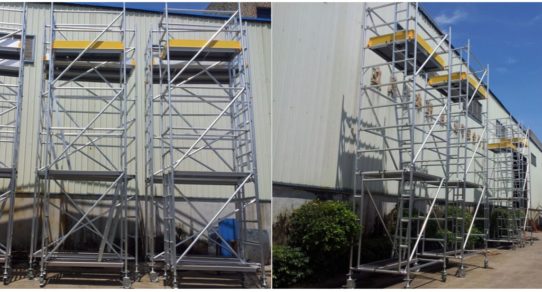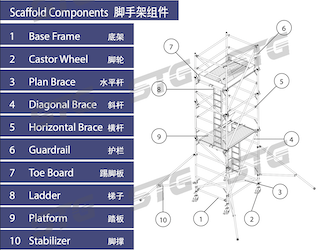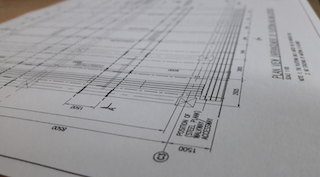Waterproofing is a crucial aspect of construction, protecting structures from water damage and ensuring their longevity. When it comes to executing waterproofing projects, safety and accessibility are paramount. Scaffolding offers an ideal solution, providing a secure platform that allows workers to efficiently and safely carry out waterproofing tasks. In this article, we will explore the advantages of using scaffolding for waterproofing, focusing on its role in ensuring safety, enhancing productivity, and promoting successful waterproofing endeavors.
Ensuring Safe Access to Elevated Areas
Working on elevated surfaces during waterproofing projects poses inherent risks. Scaffolding provides a stable and secure platform, eliminating the need for risky alternatives like ladders. By offering a solid framework, scaffolding enables workers to access elevated areas safely and efficiently, reducing the chances of accidents or falls.
Facilitating Effective Surface Preparation and Application
Before applying waterproofing solutions, proper surface preparation is crucial. Scaffolding serves as a sturdy base for workers to carry out essential tasks such as surface cleaning, repair, and priming. It provides workers with convenient access to all areas requiring waterproofing treatment, ensuring thorough preparation and precise application of waterproofing materials for optimal results.
Prioritizing Safety with Fall Protection Measures
Safety is of utmost importance in any construction project. Scaffolding incorporates safety features like guardrails, toe boards, and safety nets, minimizing the risk of falls and accidents during waterproofing operations. By adhering to safety standards and regulations, scaffolding creates a secure working environment that promotes worker well-being.
Enhancing Efficiency and Productivity
Efficiency is crucial in waterproofing projects, especially when time-sensitive factors like weather conditions come into play. Scaffolding streamlines workflow by allowing workers to access multiple areas simultaneously, eliminating the need for constant repositioning or reliance on ladders. With a stable working platform, workers can carry out waterproofing tasks more efficiently, resulting in improved productivity and reduced project timelines.
Adapting to Complex Structures
Waterproofing projects often involve structures with complex shapes or challenging architectural features. Scaffolding provides flexibility and adaptability, making it suitable for accommodating the specific requirements of such structures. It can be customized and configured to provide access and support for waterproofing activities, ensuring comprehensive coverage and effective treatment.
Simplifying Maintenance and Inspections
Regular maintenance and inspections are crucial for the long-term effectiveness of waterproofing systems. Scaffolding facilitates easy access to previously treated areas, simplifying maintenance tasks and ensuring proper inspections, repairs, or recoating as needed. By using scaffolding, construction professionals can extend the lifespan of waterproofing systems and minimize potential water damage in the future.
Conclusion
Scaffolding plays a pivotal role in ensuring safety and efficiency in waterproofing projects. By providing a secure working platform, scaffolding enables workers to execute waterproofing tasks with confidence. It ensures safe access to elevated areas, enhances productivity, and promotes successful waterproofing outcomes. Embracing scaffolding as a reliable tool in waterproofing projects not only safeguards the well-being of workers but also contributes to the long-term protection and durability of structures.






